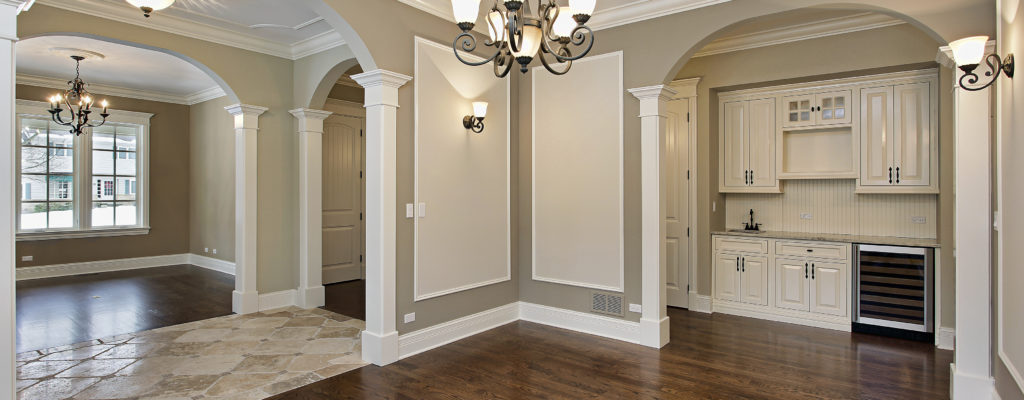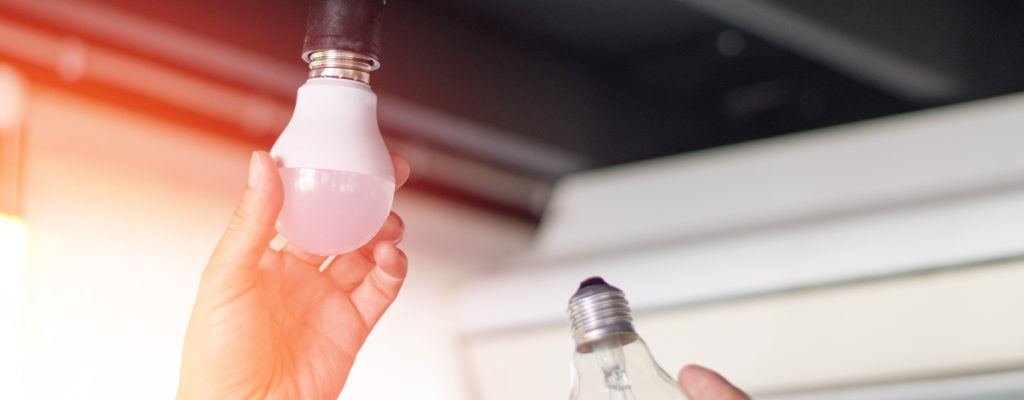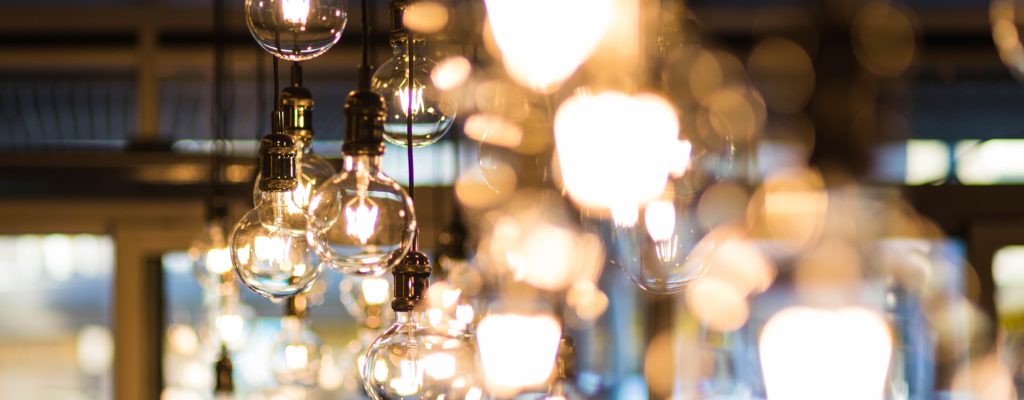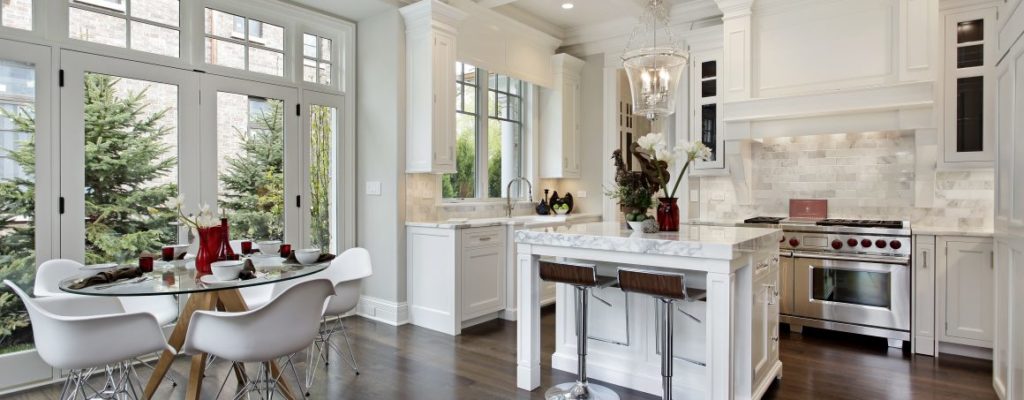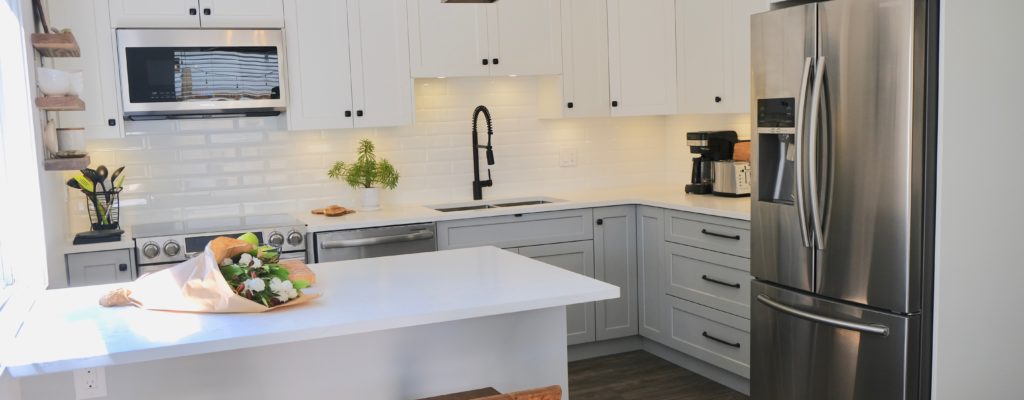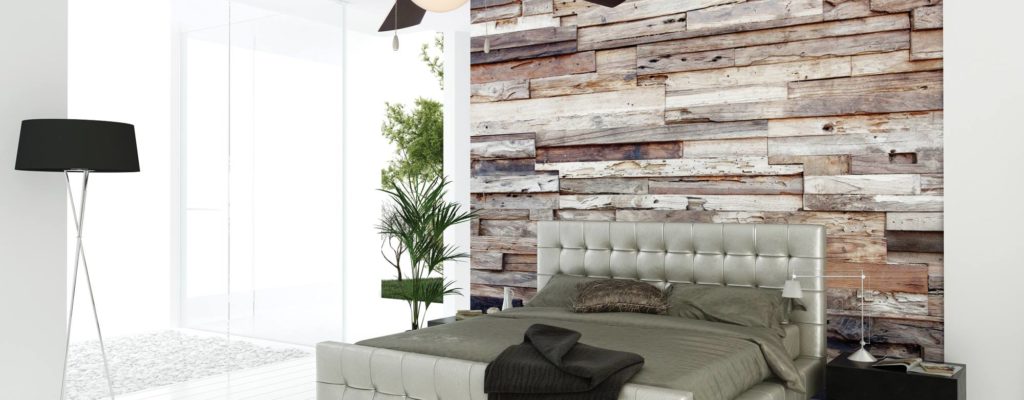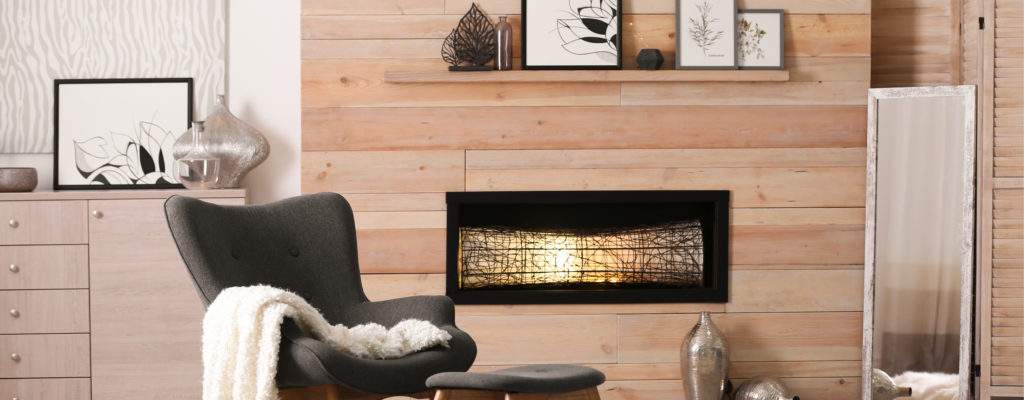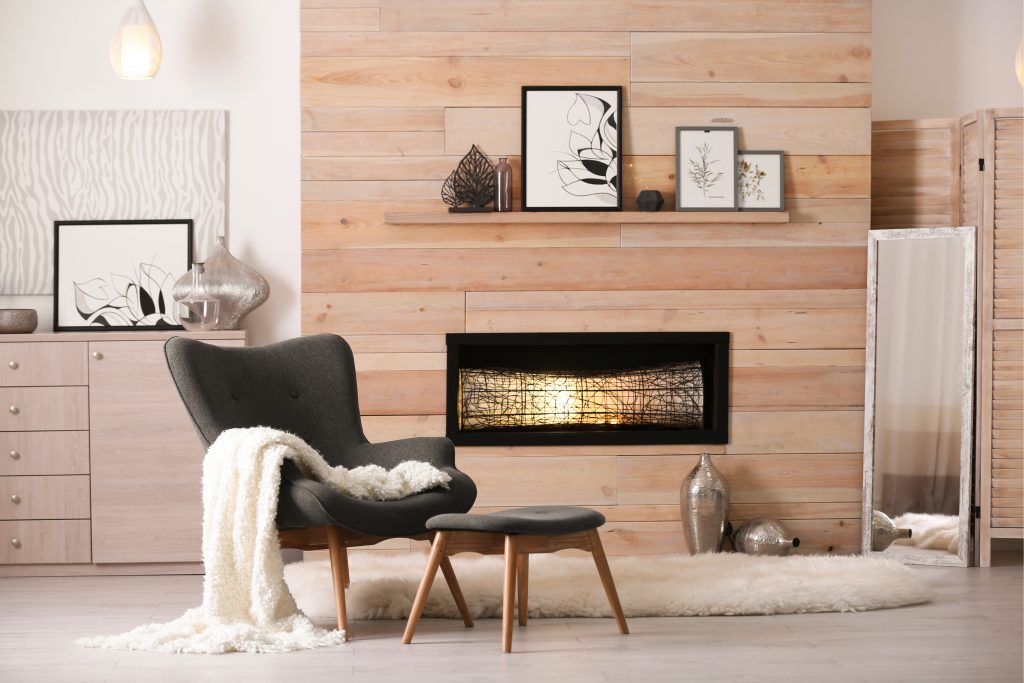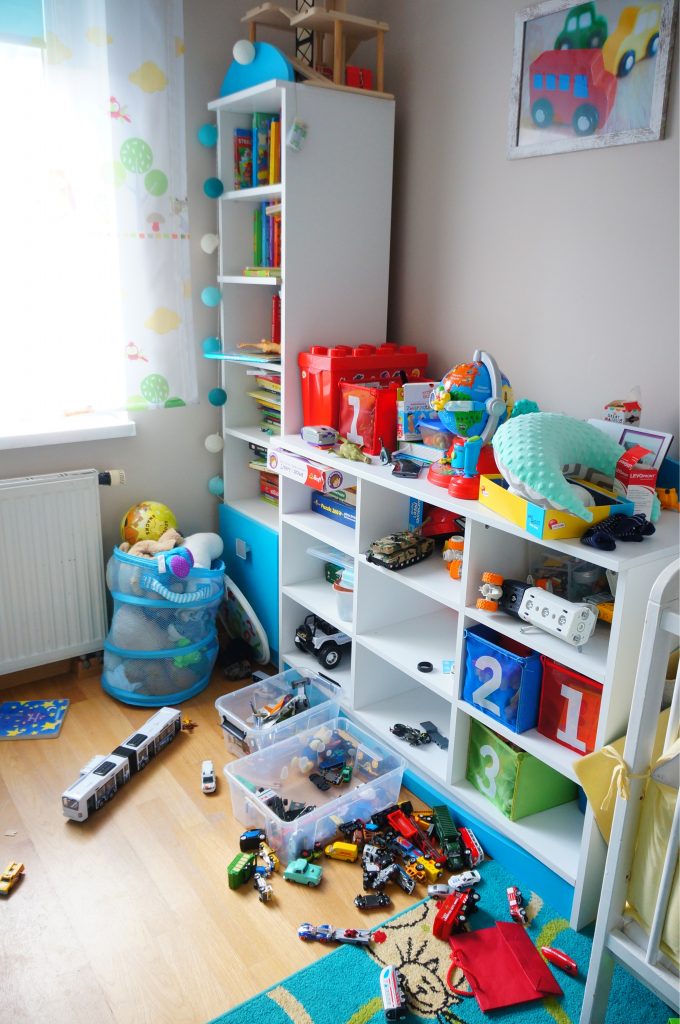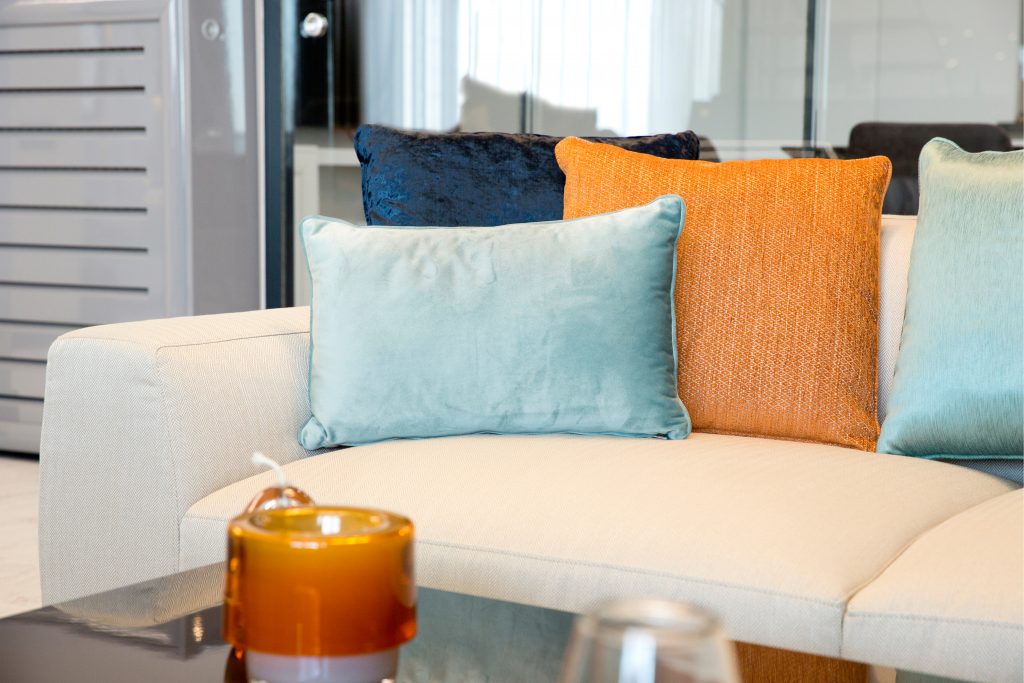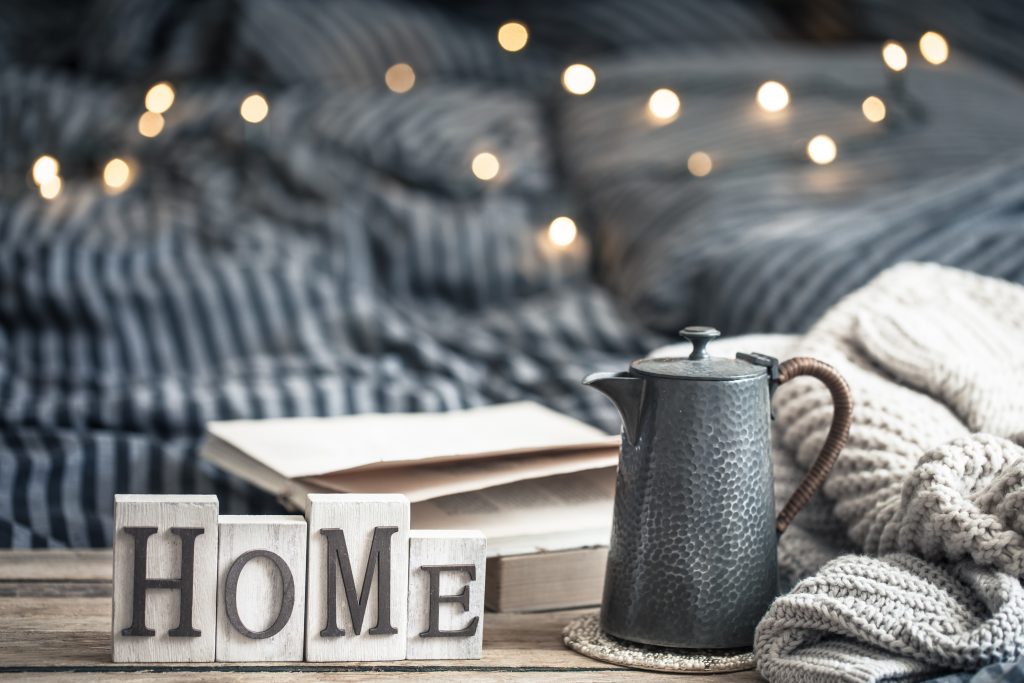The kitchen is not only one of the most functional rooms in the home, but it’s also a central place to express your style! Kitchen lighting should combine excellent functionality with equal flair, and there’s no better way to do that than with pendant lighting. Here’s an in-depth guide of 6 vital principles to help you choose and hang the perfect pendant light in your kitchen.
1. Quantity

Odd numbers make for natural design groupings, so aim for odd groupings of lights when you hang pendants. Consider each kitchen area separately, creating one group over the kitchen island, another over the sink, and a new one in other unique areas of your kitchen. You’re the boss here—so break the rule here if you think two lights are better than three.
2. Scale

Hang something too big, and it will encroach on needed space. Hang a fixture that’s too small, and it won’t provide enough functional light or stylistic pizzazz. The edge of a pendant fixture should hang 6” from the outside edge of the island, with appropriate space between pendants.
Tall ceilings can handle a larger pendant, so if you’ve got vaulted ceilings, consider choosing a fixture with extra height and bulk to capitalize on the grandeur of your ceiling. If you’re debating between several good options, bigger is better!
3. Light Output

Some finishes, like chrome or polished nickel, are reflective and seem to ‘disappear’ when the lights come on. Other finishes are bold, providing high contrast against kitchen cabinetry. Most fixtures come in multiple finishes, so decide if you prefer architectural and bold, or a light floating feel.
Even better? You don’t have to match the finish of the fixture to your kitchen hardware. Consider the colors in your kitchen—appliances, flooring, décor, accent pieces. If your kitchen has gold knobs and a dark hardwood floor, those tones easily justify a gold, bronze, black, or even two-tone fixture! Don’t limit yourself here.
5. Style

The kitchen island is a great place to define the style of your home, so be daring! If you’re decorating your forever home, hang a pendant you really love. If you plan to resell, consider hanging a trendy, popular fixture that will appeal to the largest group of buyers later.
Whatever you hang, avoid an awkward look by hanging your light at the correct height. The bottom of the fixture should sit 30-36” from the top of the counter to best emphasize the beauty of your pendant and preserve needed space.
6. Function

Light output is one element of a pendant’s functionality, but the styling and shape of the light also have significant impact. Open and airy fixtures lighten the look of the kitchen, creating negative space and emphasizing kitchen openness. They spread light more generally throughout the kitchen.
Opaque, metal fixtures create solid, positive space that fills in gaps and draws the eye. This solidness directs the light downward and brightens usable counter space making solid fixtures better task lighting than glass ones. Both options are good, but some will be better for your needs than others.
With such a wide array of pendants to choose from, you’re sure to find one that works for you! Compare your top favorites for their functionality and flair, and don’t hesitate to reach out to Hobrecht Lighting with any questions.
